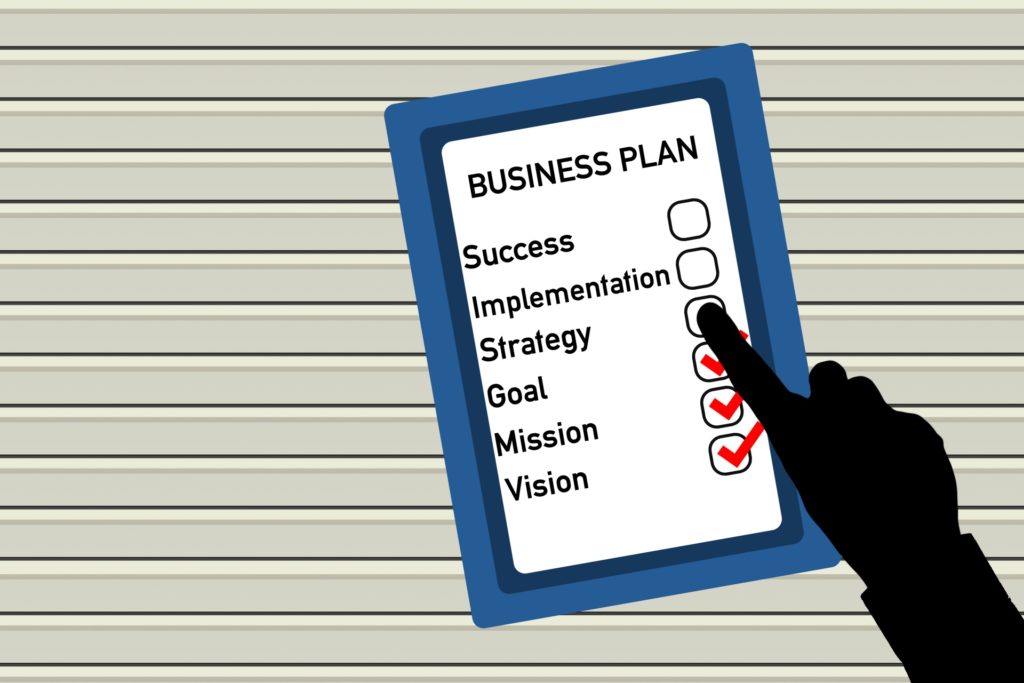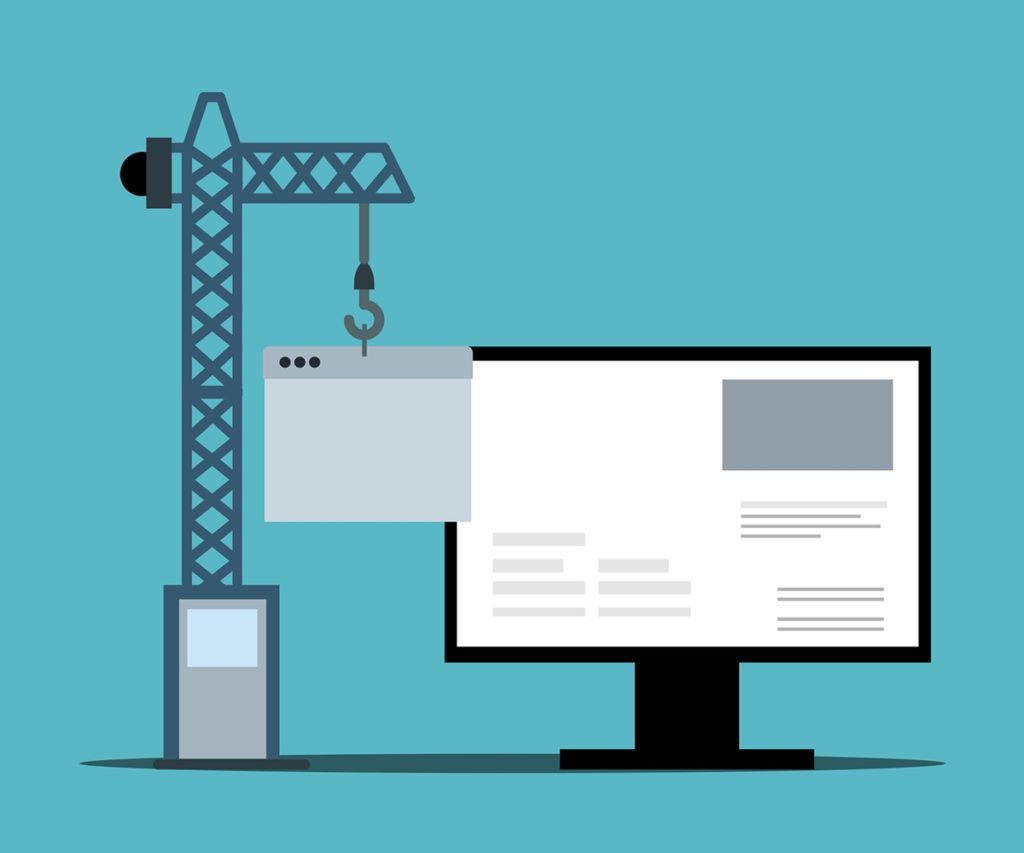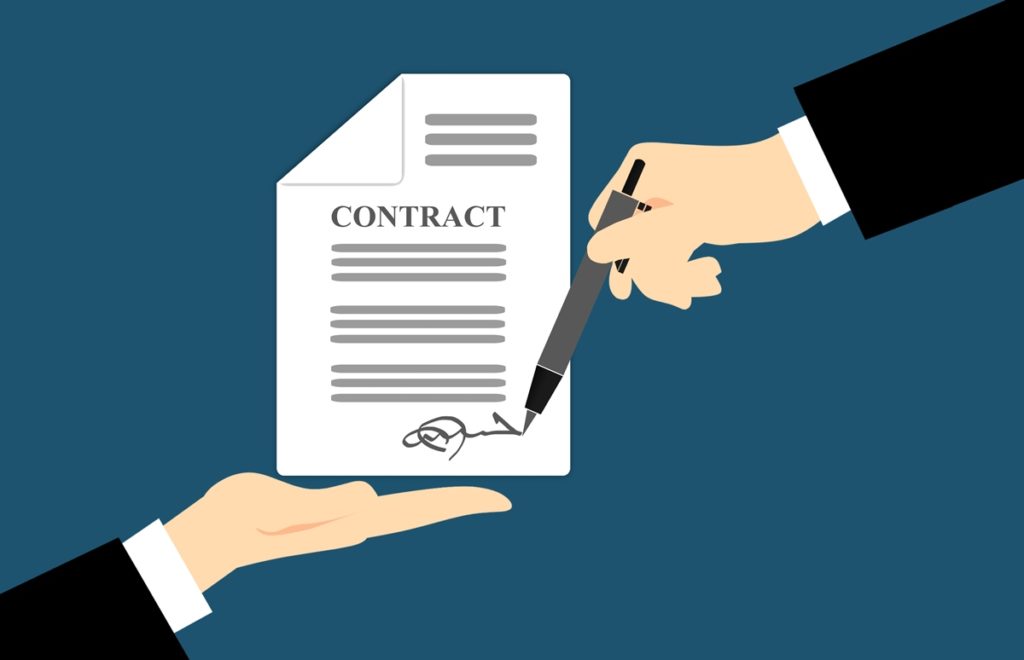The digital revolution has transformed the way we do business. With the advent of the internet and innovative technologies, establishing a web business has become an exciting venture for modern entrepreneurs. Not confined by geographical borders, a web business can extend its reach to a global audience, offering boundless potential for growth and success.
But how does one navigate the intricate process of starting a web business? This comprehensive guide will demystify the process, offering 9 detailed steps to lead you from the initial conception of your business idea to its official launch and beyond. Let’s see how to start a web business.

Step 1: Identify Demand
In a world overflowing with ideas, it is vital to understand the one which can turn into a profitable venture. How can you do this? By identifying a demand in the market that can be fulfilled by your web business. In the initial stage, market demand can be considered as a hypothetical notion of how much of your product or service could be consumed or used if it was available. Here’s how to identify it:
1.1 Conduct Market Research
The first step is to perform comprehensive market research. The Internet is a great place to start, offering a wealth of information at your fingertips. Tools like Google Trends and social media platforms can help you get a sense of what people are currently interested in or are talking about.
For instance, Google Trends allows you to see how often a particular search term is entered compared to the total search volume across various regions of the world, giving you an idea of how the interest in a particular topic has changed over time. Similarly, social media can provide insight into what’s trending among consumers in real-time.
1.2 Use Surveys and Interviews
Once you have a general idea of the market trends, use surveys or interviews to get more specific data from potential customers. Ask about their preferences, what they feel is missing in the current market, and what they would ideally like to see. This direct feedback can help you understand what the market needs, enabling you to mold your business idea to meet those needs.
1.3 Analyze the Competition
Looking at what your competitors are doing is another way to identify market demand. Understand what products or services they are offering and identify any gaps. Perhaps there’s something they’re not doing, or not doing well, that you could. By differentiating your business in this way, you can create a unique selling point that sets you apart.
1.4 Validate Your Idea
The final step is to validate your idea. After gathering all the data, it’s time to analyze and validate whether your business idea can indeed fulfill a market demand. Consider the practicality, profitability, and sustainability of the idea. Remember, the goal is not just to start a business, but to start a business that can be successful and profitable in the long run.
Identifying demand is not a one-time task. As you progress through each stage of setting up your web business, continually reassess the market demand. Changes in the market can occur rapidly and keeping up with these changes will allow you to adjust your strategies accordingly, ensuring your business stays relevant and competitive.
Identifying demand sets the direction for your web business. Without demand, there’s no customer, and without the customer, there’s no business. By understanding what the market wants, you’re one step closer to creating a successful web business.

Step 2: Write a Business Plan
A business plan is like a roadmap for your web business, outlining your company’s goals and detailing how you plan to achieve them. It not only provides clarity and direction but also helps you understand the viability of your business idea. Let’s break down the process of writing a robust business plan.
2.1 Executive Summary
Start with an executive summary, which should succinctly outline your business concept, the problem you’ve identified in the market, your solution, and how it’s different or better than existing solutions. It’s essentially an overview of your business plan and although it’s written first, you can come back to refine it after completing the other sections.
2.2 Company Description
In this section, give a detailed explanation of your business. Include the nature of your web business, the market needs it will meet, and how it will do so. Also, highlight the unique aspects of your business that will give you a competitive advantage.
2.3 Market Analysis
This is where your market research comes into play. Provide a deep understanding of the industry, including current trends, growth potential, customer behaviors, and the competitive landscape. Also, explain your target audience’s demographics and psychographics in detail.
2.4 Organization and Management
This section should detail your business’s legal structure (LLC, corporation, sole proprietorship, etc.), ownership, and the team that will run it. Even if it’s just you, outlining your skills, experience, and roles can provide clarity and structure.
2.5 Services or Products
Describe in detail what you’re selling or what services you’re offering. Explain how it benefits your customers and how it stands out from what your competitors offer. If applicable, discuss product lifecycle and any intellectual property rights.
2.6 Marketing and Sales Strategy
Lay out your strategy for attracting and retaining customers. Cover your branding, pricing, sales, advertising, and promotion plans. Discuss how you’ll reach your target market (SEO, social media marketing, email marketing, etc.) and how you’ll lead potential customers through the sales process.
2.7 Funding Request
If you’re seeking funding, specify your current funding requirements, future funding requirements over the next five years, how you’ll use the funds, and the types of funding you’re considering (loans, investor equity, etc.).
2.8 Financial Projections
This section should convey the financial viability of your web business. Include income statements, balance sheets, and cash flow statements for the next three to five years. If you’re seeking funding, provide a clear plan to generate income and make a profit.
2.9 Appendix
An optional section that can include resumes, permits, leases, contracts, or other documents that support your business plan.
Creating a business plan takes time and thought, but it’s an essential step in transforming your business idea into reality. It not only helps you to think deeply about your business idea but also provides potential investors with information to determine whether your business is a viable investment. Always remember that your business plan is a living document. As your business evolves, so too should your business plan.

Step 3: Decide How You Will Monetise
Having a concrete monetisation strategy is crucial for the financial success of your web business. This is how you will convert your website’s traffic and user engagement into revenue. Here’s how you can decide on a suitable monetisation method:
3.1 Understand Your Business and Audience
The nature of your business and the characteristics of your audience will greatly influence your monetisation strategy. For instance, if you’re planning a content-based site like a blog or news site, advertising or affiliate marketing could be profitable models. If you’re selling goods or services, a direct sales or subscription model might be more suitable.
3.2 Evaluate Different Monetisation Models
Explore and evaluate different monetisation models. Some popular models include:
- Direct Sales: Selling products or services directly to customers. This is the most traditional and straightforward method.
- Subscription Model: Charging users a recurring fee for access to a product or service.
- Freemium Model: Offering basic services for free, while charging for premium features.
- Affiliate Marketing: Promoting other businesses’ products or services and earning a commission for each sale or lead.
- Advertising: Displaying ads on your website and earning revenue from user views or clicks.
Each of these models has its own pros and cons, and what works for one business might not work for another.
3.3 Test and Refine Your Monetisation Strategy
Consider starting with one monetisation model, and as your business grows and you understand your audience better, you can experiment with other models. Analyse your revenue data, user behavior, and feedback to understand what’s working and what’s not. Use this information to refine your monetisation strategy over time.
3.4 Consider Multiple Revenue Streams
Depending on your business, it may be advantageous to have multiple revenue streams. For example, a blog could earn revenue from advertising, affiliate marketing, and selling e-books or courses. This diversification can make your business more resilient.
Deciding on a monetisation strategy is a critical step in building a web business. While it’s important to choose a model that aligns with your business type and target audience, it’s equally important to remain flexible. As your business grows, your monetisation strategy should evolve too. Always keep an eye on your performance data and be ready to pivot as necessary to maximise your revenue.

Step 4: Train Yourself Up
While passion and drive are significant components of entrepreneurial success, they must be paired with a strong knowledge base and skill set. Depending on the nature of your web business, there may be several areas where you need to develop or enhance your skills. This step is all about learning and adapting, setting a strong foundation for your entrepreneurial journey. Here’s how to approach it:
4.1 Identify Your Skill Gaps
Start by identifying areas where you need improvement or where you lack knowledge. This could be anything from coding, SEO, digital marketing, financial management, to industry-specific knowledge. Conduct a self-audit of your skills related to the web business you want to establish.
4.2 Prioritize Learning
Prioritize your learning based on what’s most important to get your business off the ground. For instance, if you plan to manage your website yourself, then understanding website design, user experience, and coding might be essential. If you’re launching a blog, SEO, and content creation could be top of the list.
4.3 Utilize Online Resources
In the digital age, there’s a wealth of resources available online. Websites like Coursera, Udemy, LinkedIn Learning, and Khan Academy offer courses on everything from web design to digital marketing to finance. You can also find countless tutorials and educational videos on YouTube.
4.4 Attend Workshops and Webinars
Workshops and webinars are great opportunities for intensive learning and networking. Industry-specific events will not only provide you with valuable knowledge but will also allow you to connect with like-minded individuals who can offer advice, support, and partnership opportunities.
4.5 Learn from Others in Your Field
Look to others in your field for inspiration and learning opportunities. This could be through mentoring, networking, or simply following successful entrepreneurs on social media. They often share their experiences and insights, which can be valuable lessons for your journey.
4.6 Consider Formal Education
Depending on your business and personal preferences, you may want to consider formal education, such as a degree or certificate in a relevant field. While this is not necessary for every entrepreneur, it can provide a structured learning environment and deeper understanding in certain areas.
4.7 Practice and Implement
Remember, the best kind of learning is done by doing. As you gain new knowledge and skills, put them into practice. You’ll learn a lot through trial and error as you apply what you’ve learned to real-life scenarios.
Self-education is an ongoing process. As you grow your web business, you’ll encounter new challenges that require new skills. Keep learning, keep adapting, and remember that every entrepreneur, no matter how successful, started from the beginning and learned along the way.

Step 5: Assess Your Cash Flow
Financial management is critical to the success of any business. Understanding and managing your cash flow, in particular, is crucial as it can influence your capacity to survive and grow. Here’s how to assess and manage your cash flow:
5.1 Understand What Cash Flow Is
Cash flow is the money that is moving (flowing) in and out of your business in a month. While it does seem sometimes that cash flow only goes one way – out of the business – it does flow both ways.
5.2 Create a Cash Flow Forecast
A cash flow forecast is an estimate of the amount of money you expect to flow in and out of your business and includes your projected income and expenses. Cash flow forecasts can help you manage your working capital and anticipate potential financial issues.
5.3 Identify Income Sources
List all the possible sources of incoming cash, including sales, loans, investment capital, or any other income. Be realistic in your estimations, and if you’re just starting, it’s better to err on the side of caution and underestimate your income.
5.4 Identify Expenses
Next, list your estimated expenses. Consider all possible costs, including website development and maintenance, marketing and advertising, taxes, utilities, stock, shipping costs, and any other costs associated with running your web business. Again, it’s better to overestimate your expenses.
5.5 Monitor Your Cash Flow Regularly
Monitoring your cash flow should be a regular task. Keeping a close eye on your cash flow can help you spot trends, prepare for the future, and address any issues before they become significant problems.
5.6 Keep Costs in Check
One of the biggest challenges with maintaining positive cash flow is managing costs. Continually look for areas where you can reduce costs without compromising the quality of your product or service.
5.7 Maintain a Cash Reserve
To safeguard against cash flow shortages, it’s wise to maintain a cash reserve that can cover at least three to six months of operating expenses. This provides a safety net for unexpected costs or if your business hits a rough patch.
Assessing and managing your cash flow is a continuous process that requires regular attention. It’s an integral part of keeping your business financially healthy. Proper cash flow management can help ensure your business runs smoothly and is positioned for growth and longevity.

Step 6: Create Your Website
Your website is your business’s online storefront, and it’s often the first interaction potential customers have with your brand. Therefore, it’s critical to create a website that is visually appealing, easy to navigate, and aligns with your brand image. Here’s a step-by-step guide:
6.1 Define the Purpose and Target Audience
Before you start designing, clearly define the purpose of your website and the audience you’re trying to reach. Are you providing information, selling products, or offering a service? Who are your ideal customers, and what do they value? The answers to these questions will guide your website creation process.
6.2 Choose Your Domain Name
Your domain name is your online address and forms a major part of your online identity. Choose a domain name that is simple, memorable, and reflective of your brand. Use a reputable registrar to purchase your chosen domain.
6.3 Decide on DIY or Professional Design
If you have the skills, time, and desire, there are many do-it-yourself website builders available like Wix, WordPress, and Squarespace. However, if the idea of creating a website seems daunting, consider hiring a professional web designer. Although it’s an added expense, a professionally designed website can give your business a polished, professional image.
6.4 Choose a Hosting Provider
A hosting provider is a company that stores your website on its servers, making it accessible on the internet. Some popular hosting providers include Bluehost, HostGator, and SiteGround. Consider factors like reliability, speed, customer support, and cost when choosing a hosting provider.
6.5 Plan Your Site Layout
A well-thought-out layout will make your website easy to navigate. Plan your pages and categories carefully. A typical website includes a homepage, about page, product/service pages, a blog, and a contact page. Remember, the user experience should guide your layout design.
6.6 Design Your Site
Whether you’re using a DIY website builder or working with a professional, keep your design clean, modern, and in line with your brand image. Use high-quality images, easy-to-read fonts, and colors that reflect your branding.
6.7 Create High-Quality Content
Content is crucial for attracting and retaining website visitors. Ensure your content is well-written, informative, and includes keywords relevant to your business to improve SEO. Regularly updating your content can also boost SEO and keep visitors coming back.
6.8 Optimize for Mobile
With more and more people accessing the internet via mobile devices, it’s crucial your website is mobile-friendly. Many website builders offer mobile-responsive themes, but it’s always good to test your site on various devices.
6.9 Implement SEO Best Practices
Use SEO best practices to increase your website’s visibility on search engines. This includes using relevant keywords, creating quality content, optimizing page load speed, and getting quality backlinks.
6.10 Launch and Test Your Website
Once you’re happy with your website, it’s time to launch. But the work doesn’t stop there. Test your website regularly, look for any issues, like broken links or slow-loading pages, and fix them promptly. To do this, you can use Page Counter by Sitechecker tool.

Step 7: Set Up Payments
Accepting online payments is a crucial part of running a web business. It’s essential to have a reliable, secure, and user-friendly payment process. Here’s a guide on setting up payments for your online business:
7.1 Choose the Right Payment Gateway
A payment gateway is a merchant service that processes credit card payments for online and offline businesses. Examples include PayPal, Stripe, and Square. When choosing a payment gateway, consider factors like transaction fees, payment methods accepted, integration with your shopping cart, security, and the checkout experience for your customers.
7.2 Understand the Costs Involved
Every payment gateway comes with its own set of fees. This usually includes a transaction fee, which is a small percentage of each sale, and may include a monthly subscription fee. Make sure you understand these costs and account for them in your pricing and financial planning.
7.3 Ensure Security
Security is a major concern in online transactions. Choose a payment gateway that is PCI-DSS compliant (the standard for secure transactions) and supports SSL certificates. This ensures that your customers’ data is kept secure during transactions.
7.4 Consider the Customer Experience
The checkout process should be quick, simple, and intuitive. A complicated or lengthy checkout process can lead to cart abandonment. Many payment gateways offer the option for customers to save their payment details, making future purchases quicker and easier.
7.5 Integrate with Your Website
Your chosen payment gateway should integrate seamlessly with your website for a smooth checkout process. Many website builders and e-commerce platforms have built-in integrations with popular payment gateways.
7.6 Set Up Your Payment Gateway
Follow the instructions provided by your chosen payment gateway to set it up. This typically involves creating an account, setting your preferences, and integrating it with your website.
7.7 Test the Payment Process
Before launching, thoroughly test the payment process to ensure everything works correctly. Check the entire process from checkout to receipt of payment, and make sure the payment gateway correctly records transactions.
7.8 Educate Your Customers
Ensure your customers know which payment methods you accept, and guide them through the checkout process if necessary. This could be through an FAQ page, informational graphics, or a tutorial video.
Setting up online payments may seem daunting, but by choosing a trusted payment gateway and prioritizing security and user experience, you’ll make the process much smoother. Remember, the easier it is for customers to make a purchase, the more likely they are to do so. Your payment process can have a significant impact on your web business’s sales and customer satisfaction.

Step 8: Get the Word Out
Having an excellent web business won’t get you far if people aren’t aware it exists. This step focuses on marketing your web business to attract and retain customers. Here’s a detailed guide to help you:
8.1 Define Your Brand
Before you start promoting your business, ensure you have a clearly defined brand. This includes your brand name, logo, colors, and the tone and style of your communications. Your brand should reflect your business’s personality and appeal to your target audience.
8.2 Develop a Marketing Strategy
Creating a marketing strategy is essential. Consider your target audience, key messages, marketing goals, and the best channels to reach your audience. Your strategy should outline the tactics you’ll use, such as SEO, content marketing, social media, email marketing, paid advertising, and public relations.
8.3 Use SEO to Your Advantage
Optimizing your website and content for search engines can significantly increase your visibility. Use relevant keywords, create quality content, optimize your site speed, and earn backlinks to improve your search engine ranking.
8.4 Leverage Social Media
Social media is a powerful marketing tool. Choose platforms that align with your audience and your business, such as Facebook, Instagram, LinkedIn, or Twitter. Share engaging content, interact with your followers, and consider using paid advertising to extend your reach.
8.5 Start an Email Marketing Campaign
Email marketing is one of the most effective forms of digital marketing. Collect email addresses from visitors to your website (with their permission) and send regular newsletters or promotional emails. Remember to provide value, not just sales pitches.
8.6 Consider Paid Advertising
Paid advertising, such as Google AdWords or social media ads, can help you reach a larger audience. Consider your budget and your target audience when deciding on paid advertising.
8.7 Network
Networking, both online and offline, can help spread the word about your business. Join relevant forums, attend industry events, or consider collaborations with other businesses.
8.8 Measure Your Success
Use tools like Google Analytics to track the success of your marketing efforts. Look at metrics like website visits, social media engagement, email open rates, and conversion rates to see what’s working and what’s not.

Step 9: Make It Official
The final step to starting your web business involves ensuring that everything you do is legal and above board. It’s essential to formalize your business to protect your brand and yourself legally and financially. Here’s a detailed guide to help you do that:
9.1 Register Your Business
Start by registering your business with the appropriate government agency in your country. The process varies depending on your location and business structure (sole proprietorship, partnership, corporation, etc.), so research the steps required in your area.
9.2 Obtain Necessary Licenses and Permits
Depending on the nature of your business, you may require certain licenses or permits to operate legally. These can be at the local, state, or federal level. Do thorough research to ensure you obtain all the necessary paperwork.
9.3 Get an Employer Identification Number (EIN)
In the U.S., businesses typically need an EIN (also known as a business tax ID) for tax purposes. It’s easy to apply for an EIN through the IRS website. If you’re based outside of the U.S., there may be a similar process to obtain a business tax ID.
9.4 Set Up Business Bank Account
Separating your personal finances from your business finances is crucial. Open a bank account specifically for your business transactions. This will make your financial tracking easier and help when it comes to filing taxes.
9.5 Understand and Set Up Tax Obligations
Ensure you understand your tax obligations. This may involve collecting sales tax on certain transactions or paying income tax on business earnings. Consider hiring an accountant or using a tax software to help with this.
9.6 Register Trademarks, Patents, and Copyrights
Protect your business’s intellectual property by registering trademarks, patents, and copyrights as needed. This can involve your business name, logo, product designs, or unique inventions.
9.7 Draft Legal Policies
Your website should have a set of legal policies in place, including terms of service, privacy policy, and refund policy. These are necessary to protect your business and build trust with customers. It’s advisable to get help from a legal professional to draft these.
9.8 Consider Business Insurance
Depending on your business type and location, you may want to consider business insurance to protect against things like legal fees or property damage.
Making your web business official is the final key step to protect you and your venture. It might feel overwhelming due to the legal and financial aspects, but there are many resources and professionals available to help. Ensuring you’re operating legally and responsibly is essential to the longevity and success of your business.
How To Start A Web Business: Conclusion
Starting a web business may seem daunting, but the digital revolution has provided us with the tools and resources to navigate this journey successfully. This comprehensive guide offers a clear roadmap, breaking down the process into manageable steps. Each step is a milestone in the exciting journey of entrepreneurship.
Remember, building a successful web business doesn’t happen overnight – it requires patience, continuous learning, and perseverance. Embrace the journey and look forward to the incredible adventure that lies ahead.
